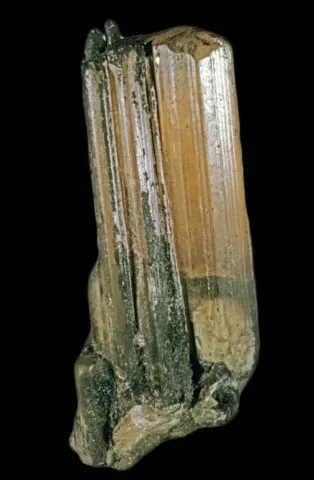WILLEMITE
Class : Silicates
Subclass : Nesosilicates
Crystal system : Trigonal
Chemistry : Zn2SiO4
Rarity : Fairly common to uncommon
Willemite is an uncommon mineral in zinc deposits, mainly those hosted in limestone formations. It can be primary, as in Franklin (New Jersey), where it accompanies franklinite and zincite, but remains essentially secondary, formed by alteration of sphalerite in an arid climate. Its chemical composition is constant, only manganese can replace zinc in significant quantities (up to 7%): this is the troostite variety, brownish to pink in color. It was named in honor of William I, King of the Netherlands from 1815 to 1840. Willemite exists mainly in granular or fibrous masses with a greasy to vitreous luster, most often colorless or gray, sometimes colored yellow, brown or pink. Crystals of this species are rare and form short hexagonal prisms ending in a very flattened rhombohedron with curved faces. It was an ore of zinc in the rare deposits where it was abundant such as at Franklin (New Jersey). Gemmy crystals are sometimes cut for jewelry.
Main photo : 8 cm willemite from Franklin Mine, New Jersey, USA © Rock Currier
Willemite in the World
Twinning
Willemite twins are rare, but known on {10-10}.
Fakes and treatments
No fakes listed for this mineral species.
Hardness : 5.5
Density : 3.89 to 4.19
Fracture : Irregular to sub-conchoidal
Streak : White
TP : Translucent to transparent
RI : 1.691 to 1.725
Birefringence : 0.028
Optical character : Uniaxial +
Pleochroism : None
Fluorescence : Green, yellow
Solubility : Hydrochloric acid
Magnetism : NoneRadioactivity : None





